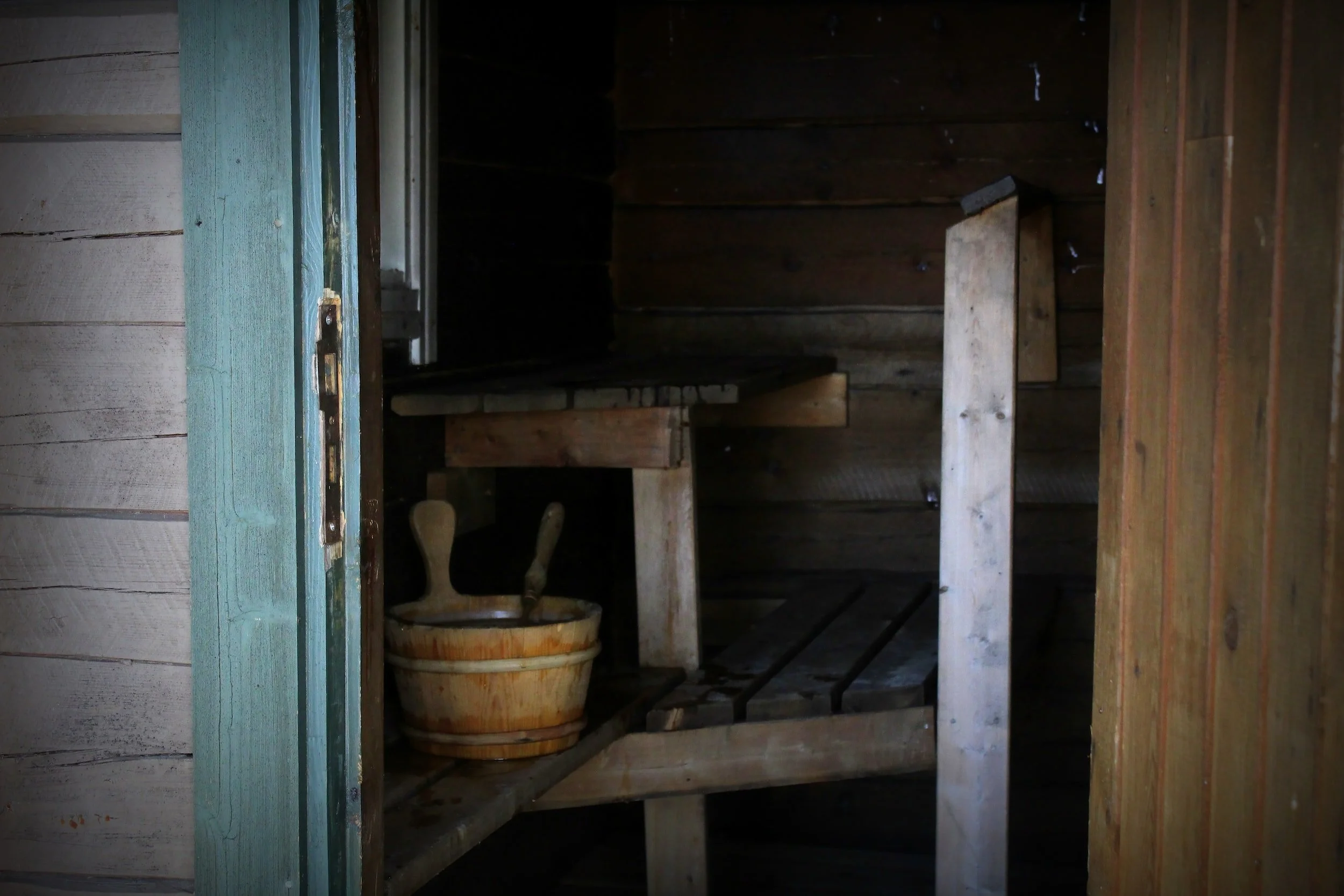by Kari Leibowitz, PhD

In a period of overwhelming anxiety, my therapist had a directive for me: “This week,” she said, “I want you to focus on physical relaxation.” I spend so much of my time in therapy trying to reign in my heart and my mind, it was a new idea to focus instead on physical relaxation. It seemed worth a try: maybe focusing on relaxing my body would help me relax my brain. And as soon as she gave me this homework assignment, like any good student, I started thinking about how to complete it. Luckily, I knew where to go: I headed for the sauna.
That Saturday, I spent three hours at an art-deco style sauna, cycling between traditional Finnish saunas of varying hotness, an infrared sauna that fit two people at a time in cozy wooden booths, and cooling off in the outdoor courtyard. I laid in silence on wooden planks, feeling my body temperature rise, sweating out my insecurities.
To me, the sauna has a similar feeling of a church or synagogue: a place of awe and reverence, where conversations are hushed. A place to be alone with your thoughts. A tech-free zone. A space where little is expected of us beyond common courtesy to our fellow heat bathers, where our main job is just to exist. In this way, saunas seem to feel like a space out of time, a refuge from the world.

In my experience growing up in America, a sauna is seen as a luxurious thing: something that accompanies a spa day, or maybe where you go for a quick schvitz after a workout if you belong to a particularly fancy gym. Something reserved for a special occasion, or assigned by your therapist.
But the word sauna is a Finnish word, and the Finns use the sauna like no other. A country of 5.5 million people is estimated to have over 3 million saunas: that’s more than one sauna for every two people in Finland. Saunas are nearly standard in apartment buildings, large offices, and along the harbor. The president and prime minister each have official saunas. Historically, women gave birth in saunas – they were some of the most accessible sterile environments.
>
“Going to the sauna can improve sleep, help keep our skin clear, and boost our immune systems so that we’re less susceptible to colds and viruses.”
And recent research is revealing that the sauna is not just a luxury: going to the sauna has a host of positive effects on our health. In addition to easing our stress and anxiety – as I experienced – going to the sauna can improve sleep, help keep our skin clear, and boost our immune systems so that we’re less susceptible to colds and viruses. Sauna bathing also improves circulation and lowers blood pressure. Some of the largest studies of the health effects of the sauna come from – you guessed it – Finland, where the results are remarkable. In a study of over 2,000 men followed for over 20 years, more frequent trips to the sauna were associated with a significantly reduced risk of heart attack, heart disease, and mortality: even after controlling for other health factors like physical activity levels, smoking, and alcohol consumption. In another study of over 1600 men and women followed for over fifteen years, going to the sauna more frequently – in this case, 4-7 times a week compared with once a week – was associated with over a 60% reduction in stroke risk. Other studies have found that more time in the sauna reduces the risk of Alzheimer’s and dementia. Going to the sauna helps people with arthritis, with chronic pain, with frequent headaches (For a comprehensive review, see: Laukkanen et al., 2018).

Researchers still aren’t completely sure of how and why sauna bathing has such healthful effects, but several studies suggest that the mechanisms may be similar to exercise: the physiological effects of time in the sauna are similar to those produced by moderate or high-intensity physical activity like walking. In other words: a trip to the sauna may be just as beneficial for your health as a trip to the gym.
And in Finland, the sauna is the great equalizer: presidents of companies sit next to their employees, parents sit with their children, social groups mix. Stripped of the clothing and context of ordinary life, people mingle more freely in the sauna. The heat and the low light and the confined space invite intimacy, with ourselves and with each other.
Whatever your goal: a quick digital detox, health improvements, relaxation, or connection, the sauna might just be the answer. By offering us shelter from the winter cold, the sauna warms us, body and soul.
Check out The Great Northern’s Sauna Village at The Market at Malcolm Yards for your winter sauna fix:

Kari Leibowitz, PhD, is a health psychologist, speaker, and writer. Her research and writing has helped people all over the world learn to embrace winter, and her forthcoming book How To Winter: Harnessing Your Mindset to Embrace All Seasons of Life, will be published by Penguin Random House in 2024. More at karileibowitz.com.

